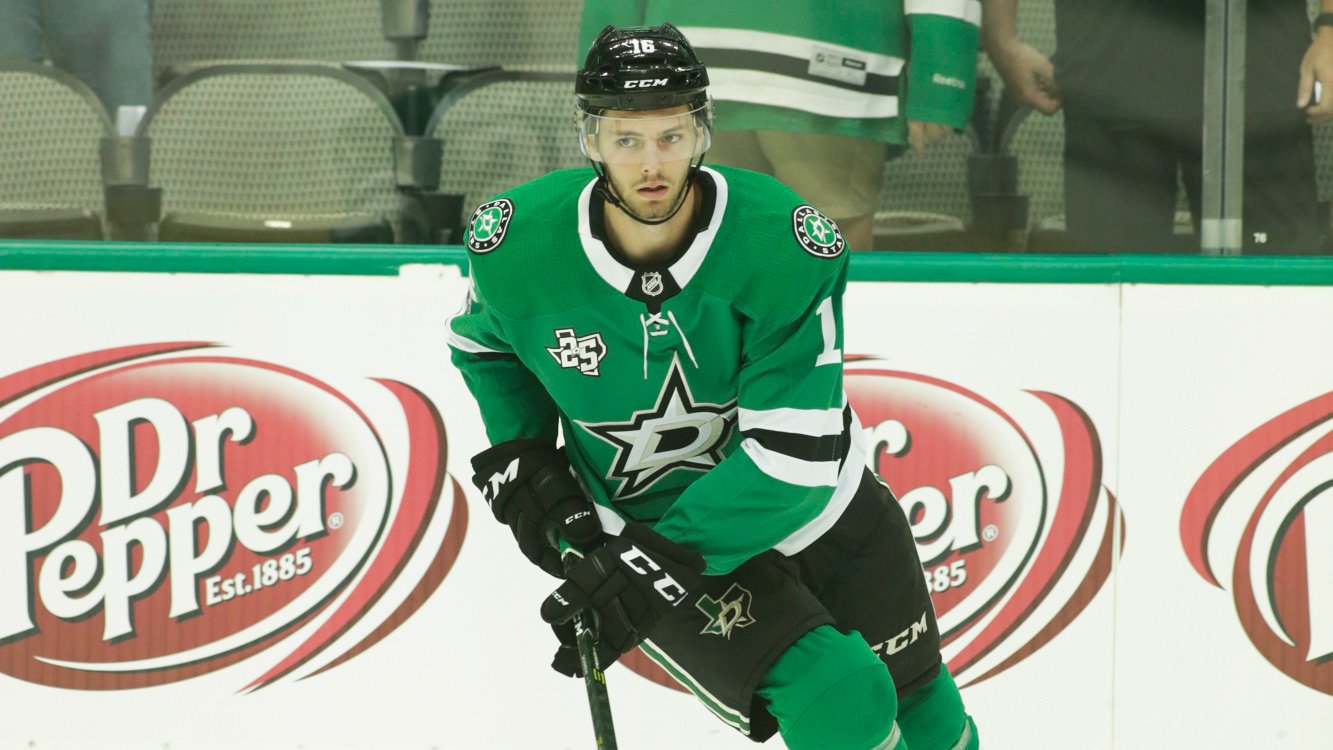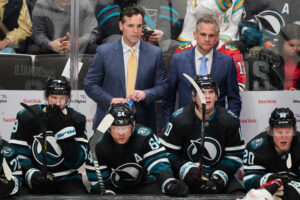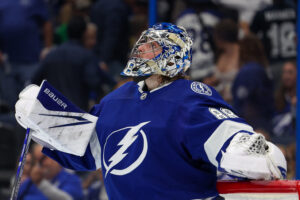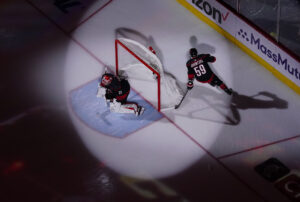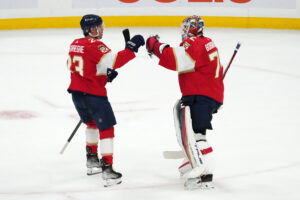NHL Player development seems to always result in more questions than answers. How likely is it for a top pick to pan out? What makes a player a “steal”? Last Word On Hockey will be starting a new series on how to properly develop prospects from all different spots throughout the draft. This week’s piece involves draft picks in the back half of the first round and how they were used early in their careers.
NHL Player Development Of First-Round Picks
In the span of 2005 through 2015, there were 84 total selections made between 16th overall and 30th overall on forwards playing in North America. Looking at all 84 forwards, they were split into different categories. Those categories were “Forwards Deemed NHL-Ready and Brought In Immediately When Ready,” “Forwards Near NHL-Ready and Brought In Immediately When Near-Ready,” “Forwards Rushed Slightly,” “Forwards Rushed,” “Forwards Forced,” “A Little Patience,” “Patience,” and “Too Much Patience.”
There were two forwards who fell into the second category on the list. Those two players are Steve Downie and Jason Dickinson.
Player Development Of Steve Downie
Downie, drafted 29th overall by the Philadelphia Flyers back in the 2005 NHL entry draft, came out of the OHL’s Windsor Spitfires organization. In his DY-1 season, Downie scored seven goals and nine assists for 16 points in 49 games, for 0.327 points per game. That ranked 75th out of the aforementioned 84 forwards in DY-1 production. He would follow that season up with 21 goals and 52 assists for 73 points in 61 games, for 1.197 points per game. That ranked 37th out of the same 84 forwards in DY production.
Upon getting drafted, Downie would spend two more seasons in the OHL. In his DY+1 season, Downie would play 35 games with two different teams, the Spitfires and Peterborough Petes. In those 35 games, he scored 19 goals and 34 assists for 53 points, for 1.514 points per game. That ranked 12th out of the 82 forwards still outside the NHL in DY+1 production.
The next season, Downie would play with two different teams again, the Petes and Kitchener Rangers, totalling 45 games. In those 45 games, he scored 35 goals and 57 assists for 92 points, for 2.044 points per game. That ranked first out of the 70 forwards still outside the NHL in DY+2 production.
How Was Downie Used?
In his first professional season, Downie would split between the NHL and AHL. In the AHL, he played 21 games, scoring five goals and 12 assists for 17 points. Meanwhile, in the NHL, he played 32 games and averaged just 9:51 time on ice per game. In that really small role, Downie still scored a solid six goals and assists for 12 points. His analytics were promising as well during that time. His even-strength offence goals above replacement (EVO) was a decent 3.6, while his even-strength defence goals above replacement (EVD) were not terrible for a rookie at -0.5. With those even-strength impacts being moderately good, his wins above replacement (WAR) was an okay 0.5, while his goals above replacement (GAR) was up at just 2.6.
In his second season, Downie would play with four(!) different teams, two in the AHL and two in the NHL. At the AHL level, split between the Flyers AHL team, the Phantoms, and the Tampa Bay Lightning affiliate, Norfolk Admirals, he played 27 games. In those 27 AHL games, he scored nine goals and 24 assists for 33 points. In the NHL, split between the Flyers and Lightning, he played 29 games, averaging just 8:26 per game, less than the year before. He scored just three goals and six points. His analytics weren’t bad either, with his EVO (1.3) falling but his EVD (0.6) improving. With those changes at even-strength, his WAR (0.4) was nearly identical, and his GAR (2.4) only dropped slightly.
Better NHL Player Development In Tampa Bay Leads To New-Found Success
After two seasons of splitting between the AHL and NHL, Downie would finally become a full-time NHLer. Not only that, but in the 79 games he played, he averaged more than 10 minutes, at 14:43 per game. In that much larger role, Downie scored 22 goals and 24 assists for 46 points. His analytics would improve dramatically, though not quite at an elite level. His EVO (13.6) was ridiculous, and his EVD (1.3) remained solid. That led to his WAR (3.3) to be excellent, and his GAR (18.3) to be great as well.
After that third season, in 2009-10, he would play just 112 more games with the Lightning across two seasons, scoring 22 goals and 38 assists for 60 points in that span. He would be dealt to the Colorado Avalanche in 2011-12, and would play 33 games across three seasons. Scoring three goals and 18 assists for 21 points. Downie would again get dealt in 2013-14, this time back to the Flyers, where he would simply finish the season, scoring three goals and 14 assists for 17 points in 51 games.
In the 2014 off-season, he would join the Pittsburgh Penguins, scoring 14 goals and assists for 28 points in 72 games. Then, in his final season, he would join the Arizona Coyotes, scoring three goals and six points in 26 games. Tampa Bay had the best player development success with Downie, but he was simply moved around way too much to truly establish himself consistently.
NHL Player Development Of Jason Dickinson
Dickinson, drafted 29th overall by the Dallas Stars in the 2013 NHL entry draft, came out of the OHL’s Guelph Storm organization. In his DY-1 season, he scored 13 goals and 22 assists for 35 points in 63 games, for 0.556 points per game. That ranked 58th out of those 84 forwards in DY-1 production. The following season, he would score 18 goals and 29 assists for 47 points in 66 games, for 0.712 points per game. That ranked 76th out of those 84 forwards in DY production.
After being drafted, Dickinson would play two more seasons in the OHL. In his DY+1 season, he played 26 goals and 52 assists for 78 points in 68 games, for 1.147 points per game. That ranked 36th out of 82 forwards still outside the NHL in DY+1 production. Following that season, he would score 27 goals and 44 assists for 71 points in 56 games, for 1.268 points per game. That ranked 15th out of 70 forwards still outside the NHL in DY+2 production.
AHL Player Development For Dickinson
After the conclusion of his OHL career, Dickinson would join the Stars affiliates, the Texas Stars, for two seasons. In his DY+3 season, he would play 73 AHL games, scoring 22 goals and 31 assists for 53 points, for 0.726 points per game. That ranked 14th out of 46 forwards still outside the NHL in DY+3 production. The following season, Dickinson would play 58 AHL games, scoring nine goals and 21 assists for 30 points, for 0.517 points per game. That ranked 15th out of 30 forwards in DY+4 production.
Finally, following those two AHL seasons, Dickinson would get his first real NHL shot.
How Was Dickinson Used
In his first taste of NHL action, he would split between the AHL and NHL. In the AHL, he would play 42 games, scoring 18 goals and 10 assists for 28 points. Meanwhile, in the NHL, he played 27 games, averaging just 8:32 per game. In that small role, he would score just two assists. His analytics were really poor as well, outside of his EVD (0.1). His EVO (-2.4) was horrible, and his WAR (-0.4) and GAR (-2.0) painted him as a liability as a rookie.
Despite that really poor rookie season, Dickinson would become a full-time NHLer in year two. He would play 67 games with the Stars, averaging a much better 13:22 per game. In that improved role, he scored six goals and 16 assists for 22 points. While that production does not jump off the page, his analytics do. His EVO (4.5) was strong, as was his EVD (2.8). With the improved even-strength numbers, his WAR (1.9) and GAR (10.2) were much, much better.
Year Three Features Near-Identical Year Two Performance
In year three, Dickinson would play 65 games and average 14:59 per game. That’s another increase in ice time. With that increase, he would score nine goals and 12 assists for 21 points. Again, his production was not excellent but was better than year two ever-so-slightly. At least, from a points per game standpoint. But his analytics would slightly drop across the board. His EVO (4.4) dropped by 0.1, and his EVD (1.3) was slashed down by 1.5. With his even-strength impact coming down, his WAR (1.3) would drop by 0.6 and his GAR (7.4) would see the largest drop, by 2.8.
Following that third season in 2019-20, Dickinson would play just one more season with the Stars. In that final season, he would play 51 games, scoring seven goals and eight assists for 15 points. He would then join the Vancouver Canucks in the 2021 off-season, and would play 62 games with them.
Dickinson scored five goals and six assists for 11 points, a disappointing season for the still-young former first-round pick. For Dickinson’s player development, the Stars could not have done much else. He did not prove he was ready for a bigger role after his first three seasons, thus he did not receive one. They still gave him raises in ice time each year, which is great. But the production was never there, and he never was able to take that next step.
They’re coming in bunches. Jason Dickinson makes it 3-0, Stars! pic.twitter.com/x7Gb651N6N
— Dallas Stars (@DallasStars) September 27, 2017
Junior league stats via Elite Prospects, NHL stats via Hockey Reference, NHL analytics via Evolving Hockey


